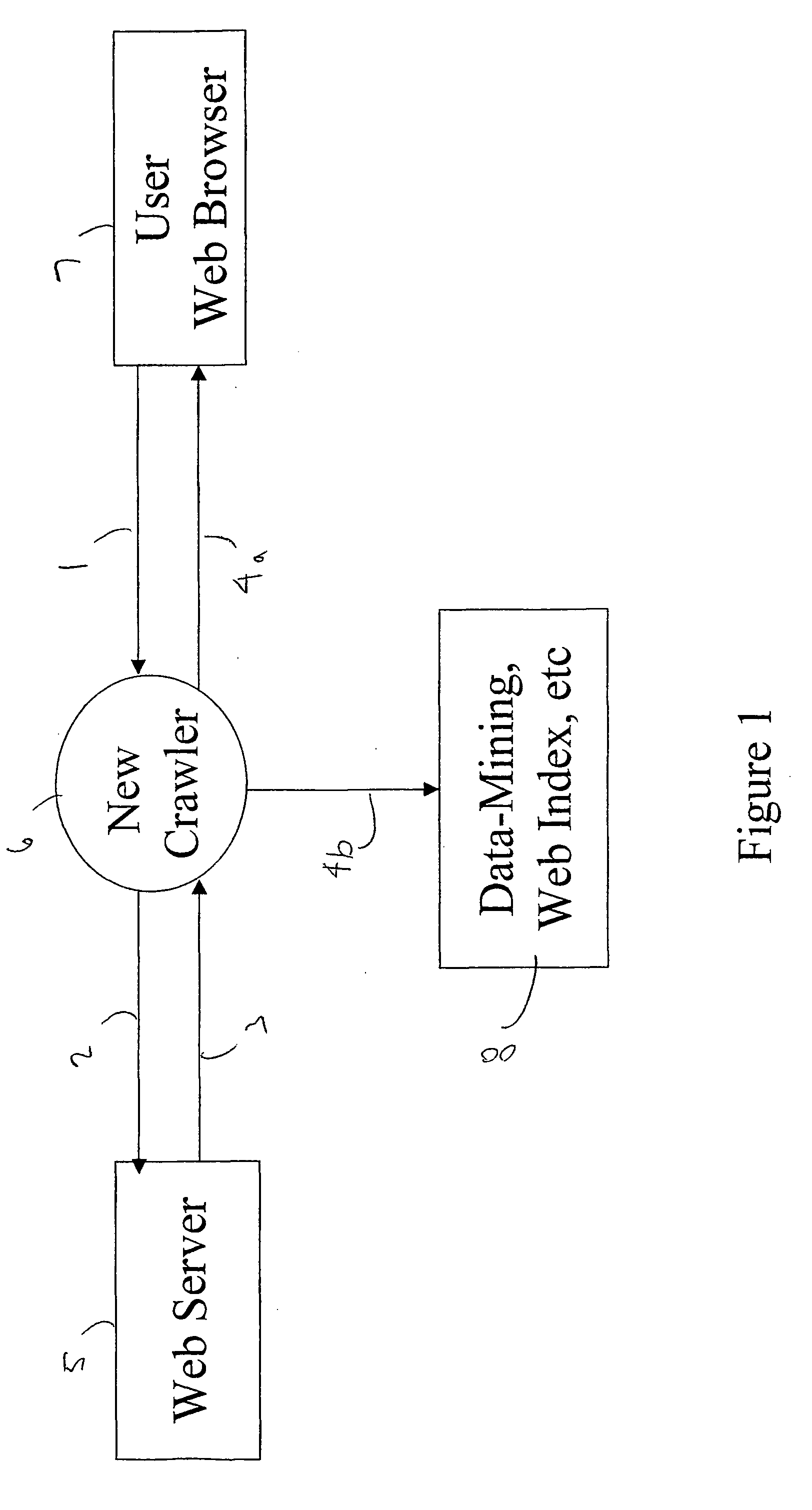Dynamic-content web crawling through traffic monitoring
- Summary
- Abstract
- Description
- Claims
- Application Information
AI Technical Summary
Benefits of technology
Problems solved by technology
Method used
Image
Examples
Embodiment Construction
[0034] The prior art model of the web is the root cause of the problem with current crawlers. The prior art model effectively assumes a finite graph, which does not correspond to the reality of the web and is therefore in error. In reality, the graph changes all the time and the content at the nodes of the graph changes as well. Pages are created, destroyed, and changed. URLs are also created, destroyed, and changed. URL address mapping to web pages is not necessarily one-to-one (1->1). Address mapping can also be many-to-one (N->1) or one-to-many (1->N).
[0035] Where the mapping is many-to-one, many unique URL's retrieve the same web page. In a one-to-one mapping one unique URL retrieves the same web page. These results are acceptable. But a one-to-many mapping means that one URL gets many different web pages, which is not an acceptable result.
[0036] When a user makes a request to a web server for a page, the URL for the page is passed to the webserver. Yet this is not the only info...
PUM
 Login to View More
Login to View More Abstract
Description
Claims
Application Information
 Login to View More
Login to View More - R&D
- Intellectual Property
- Life Sciences
- Materials
- Tech Scout
- Unparalleled Data Quality
- Higher Quality Content
- 60% Fewer Hallucinations
Browse by: Latest US Patents, China's latest patents, Technical Efficacy Thesaurus, Application Domain, Technology Topic, Popular Technical Reports.
© 2025 PatSnap. All rights reserved.Legal|Privacy policy|Modern Slavery Act Transparency Statement|Sitemap|About US| Contact US: help@patsnap.com



